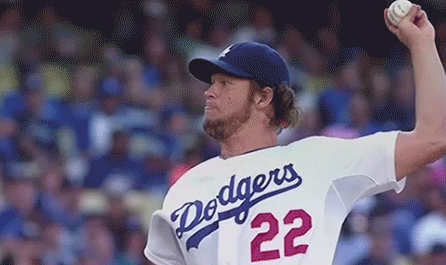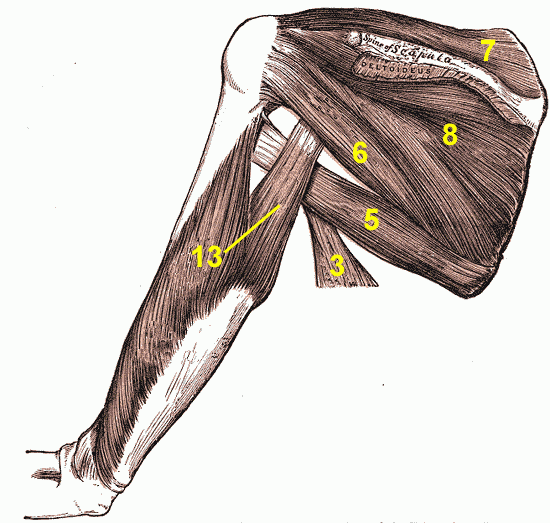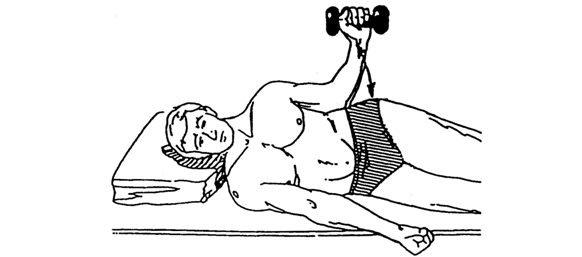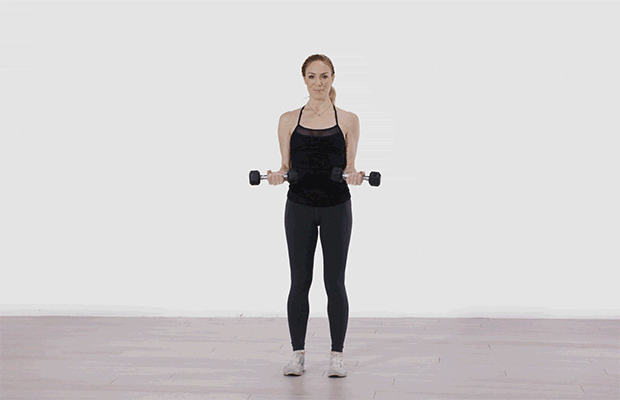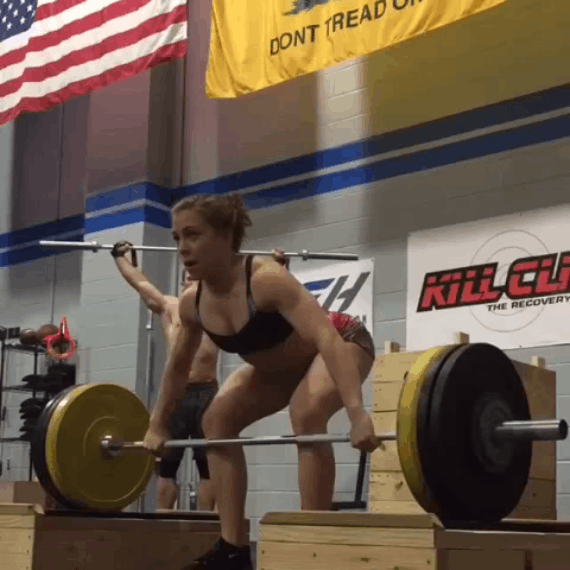Infraspinatus and Teres Minor
Next up in our rotator cuff series is the oft overlooked external rotators. When it comes to lifting and sports, internal rotation gets all the glory. Nobody does anything really cool with external rotators, right???? Well, we'll see.
First let's talk about who these muscles are. Meet the infraspinatus and the teres minor. As seen above, they are two muscles that attach to the posterior (backside) of the humerus so when they contract your upper arm rotates back or, um, externally. Give it a try. Bend your elbow and place your hand on your belly. Now, keeping your elbow at your side, move your hand away from your abdomen like opening a door. Alternatively place the back of your hand on your lower back and try to push through your back. Both of these engage the external rotators. The work when you hand is over head too, as you see Clayton Kershaw's arm in extreme external rotation before coming forward and internally rotating.
Click on the image to learn more about #6 the Teres minor muscle on the dorsum of the left scapula, with #3 being Latissimus dorsi muscle, #5 is Teres major muscle, #7 is Supraspinatus muscle, #8 is Infraspinatus muscle, and #13 is long head of Triceps brachii muscle
What's up with their names? Well, infraspinatus is named based on its location below the spine of the scapula just like the supraspinatus, and the teres minor has a big brother teres major that are both small roundish muscles (teres meaning rounded) both located just inferior to the infraspinatus. Each teres has a slightly different action based on its insertion on the humerus. The infraspinatus and teres minor both attach at the same area on the head of the humerus and their tendons make up the capsule of the shoulder joint as well.
Being two members of the rotator cuff, they are major shoulder stabilizers as well. All 4 of the rotator cuff muscles attach at the head of the humerus and you can imagine if they all contracted equally then they would just pull that ball of the humerus firmly into the socket of the glenoid which is the shoulder joint. In fact, they must do this to prevent Clayton's arm from flying off towards home plate and you keep your shoulder from dislocating every time you hang on a pull-up bar or push on your bench press.
This is called active stabilization. The amount of force acting on the shoulder joint when throwing a pitch of 90mph is just too much for some soft tissue and ligaments to hold a shoulder joint in place. The rotator cuff muscles must all contract to keep that angular velocity from pulling the shoulder joint fully out. In fact, rehab for shoulder dislocations is all about exercising those rotator cuff muscles to keep the shoulder from coming out again.
Furthermore, those sexy pectorals and deltoids that you love to work out have a tendency to pull the shoulder joint partially out of joint called subluxing, which can lead to pinching or impingement of the tendons, nerves, or other soft tissue and can cause pain and inflammation. When the deltoid contracts the head of the humerus wants to migrate upwards and smash that poor supraspinatus tendon into the acromion, and when the pec major contracts the head of the humerus wants to slide forward giving that rounded shoulder look of poor posture and worse yet anterior shoulder pain.
So how do we fix these potential problems and have healthy shoulders? Well, based on my Google search for strengthening the external rotators, we just need to strip down to our underwear, lie on our side on a giant book, and wave and olde-timey dumbell up and down. Actually, that will work! It'll just look awkward at the gym. So to look cooler, do what this guy does...
NOOOOOO!!!! Don't really do this, at home or at the gym. See what this meathead forgot that our underwear model remembered was gravity. So this guy does a nice isometric biceps workout with a little of external rotation activation, but nothing that really overloads the infraspinatus or teres minor before the biceps give out.
THE WORKOUT
A real workout of the external rotators does not need a lot of weight, and is easier done with a band as resistance instead of lying sideways to work against gravity. The video below on the left is a good way to increase the workload during the eccentric phase, which is helpful if the muscles/tendons are already inflammed. Isometric work is good for rotator cuff work as well because many times this is the main function of the external rotators not to produce power but to stabilize for other movements. My friend from AthleanX does a good job explaining that.
AND NOW FOR SOMETHING COOL...
This girl here just kills it! She puts all our external rotator cuffs to shame. At 130 lbs she cleans 180!!! Click on the image to read her story. Don't think that weight is not trying to push her shoulder right out of its shallow socket. Her rotator cuff muscles rock as she pulls that bar and externally rotates that weight overhead....and you thought the infraspinatus and teres minor never got any love.


